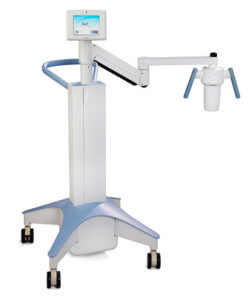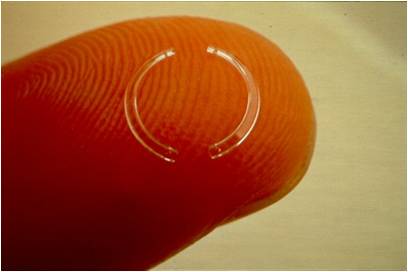
The KXL® System achieves Accelerated Cross-Linking in just minutes by increasing the UVA power and reducing the exposure time while maintaining the same total energy on the eye as standard cross-linking. It is the first and only cross-linking system manufactured with:
Procedures performed with the KXL System include Accelerated Cross-Linking and Lasik Xtra®. These procedures have the potential to:

KXL was recently approved by the FDA. Batra Vision will be among the first providers in the USA to perform KXL.
BatraVision was a trial site in the original Cornea Cross Linking (CXL) trials and now that it is FDA approved is an actual surgery facility where CXL is performed.
Insurance coverage will depend on the provider and our practice help you with your insurance quest for CXL.
Batra Vision Medical Group is a leading eye care center for cornea transplant surgery in the Berkeley and East Bay area. Cornea transplant surgery is one of the most commonly performed transplantation procedures and has a high success rate. We take a great deal of time discussing corneal care at our offices in San Leandro and Berkeley and work with patients to determine the best treatment option available. In some cases, we can suggest alternative treatments to delay or perhaps even eliminate the need for a cornea transplant.
There are approximately 36,000 cornea transplant surgeries performed in the United Stated every year. Recent advances in surgical techniques have increased success rates, making the procedure even safer and more effective than before. Given the medical expertise of the eye doctors at Batra Vision Medical Group, you can rest assured you will receive exceptional treatment and care before and after your cornea transplant.
The cornea is the clear front part of the eye that acts as the first step in focusing light onto the retina. A number of diseases and medical conditions can cause the cornea to become misshapen or cloudy resulting in impaired vision and in some cases blindness. In such cases, a cornea transplant can be performed to restore a patient’s vision.
Cornea transplant surgery refers to the replacement of a diseased cornea with a human donor cornea. The donated corneas come from a reputable eye bank and have been screened for any transmittable diseases.
An outpatient procedure that takes approximately one hour, cornea transplant surgery is performed at our offices serving the East Bay from San Leandro and Berkeley. The patient is placed under local anesthetic for the procedure. During the cornea transplant surgery, the old cornea is removed and replaced with the donor cornea. The donor cornea is held in place by stitches that will be removed during a later post-operative visit to our offices.
After cornea transplant surgery, the patient will experience some mild discomfort but will generally be able to return to work after three to four days. In a majority of cases, cornea transplant patients are not required to take anti-rejection medications following cornea transplant surgery.

Results following cornea transplant surgery will vary from patient to patient. Generally, a patient’s vision will be optimal approximately one year after cornea transplant surgery.
For the first few weeks to the first few months after cornea transplant surgery, you may notice a decline in your vision or vision fluctuations. This condition is normal. If you notice an improvement in vision during the first few weeks after surgery followed by a sudden decline in vision, you should contact our office.
Cornea transplant surgery is required to treat a variety of conditions that cause the degeneration, deformation, or clouding of the cornea. At our offices serving the Berkeley and East Bay area, we will go over various treatment plans with you to ensure you understand all of your eye care options.
The best way to determine if you require a cornea transplant is to schedule a consultation at our offices. During your eye exam and consultation, your doctor will discuss whether or not you require a cornea transplant and if there are alternative treatments that can correct your condition. We will help you make the most informed decision possible about your eye health.
Below are several corneal disorders that can be treated using cornea transplant surgery. In some cases, a patient may be able to delay or eliminate the need for a cornea transplant using a different treatment. When you visit our offices, we will discuss the various options available to you so you can make an informed decision concerning the health of your eyes.
Patients with certain cornea problems do not necessarily need to undergo cornea transplant surgery. If a patient suffers from a condition known as keratoconus, the condition can be treated using prescription corneal inserts called Intacs. Our Oakland and East Bay area offices in San Leandro and Concord offer Intacs as a sensible solution to keratoconus.
Keratoconus is an eye disease that causes the cornea (the clear outer part of the eye) to thin over time. As the cornea becomes progressively thinner, the internal pressure of the eye causes the cornea to bulge outward in an irregular cone-like shape. Though keratoconus usually does not result in complete blindness, the condition can seriously affect a person’s vision and may require cornea transplant surgery.
In most cases, the condition emerges in a person’s teenage years and continues to worsen over time. Keratoconus stabilizes around the 30s and 40s and often affects both eyes. The cause of keratoconus is currently unknown, though some believe that the condition is genetic and could be made worse by a variety of environmental factors. The disease is often treated using rigid contact lenses that reshape the deformed cornea.
Intacs, available at our Oakland and East Bay area offices, are another treatment option for patients who can no longer treat keratoconus with contact lenses or glasses. These tiny prescription inserts help reshape the deformed cornea while correcting astigmatism and nearsightedness.

Intacs are placed in the periphery of the cornea, flattening the bulging cornea and restoring a natural, dome-like shape. By restoring the natural shape of the cornea, a patient’s vision is improved.

The results of Intacs will vary from patient to patient given the unique nature of each patient’s eyes. When we use Intacs at our Oakland area offices, our main goals are to restore a patient’s functional vision and to delay or eliminate the need for a cornea transplant. In some cases, patients who receive Intacs no longer require the use of prescription lenses or glasses. If a cornea transplant is required in the future, patients with Intacs often experience no complications following surgery.
Coverage for Intacs will vary depending on your insurance provider. Our staff will assist you in receiving coverage for Intacs or will provide you with information on financing plans.